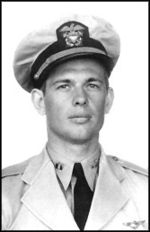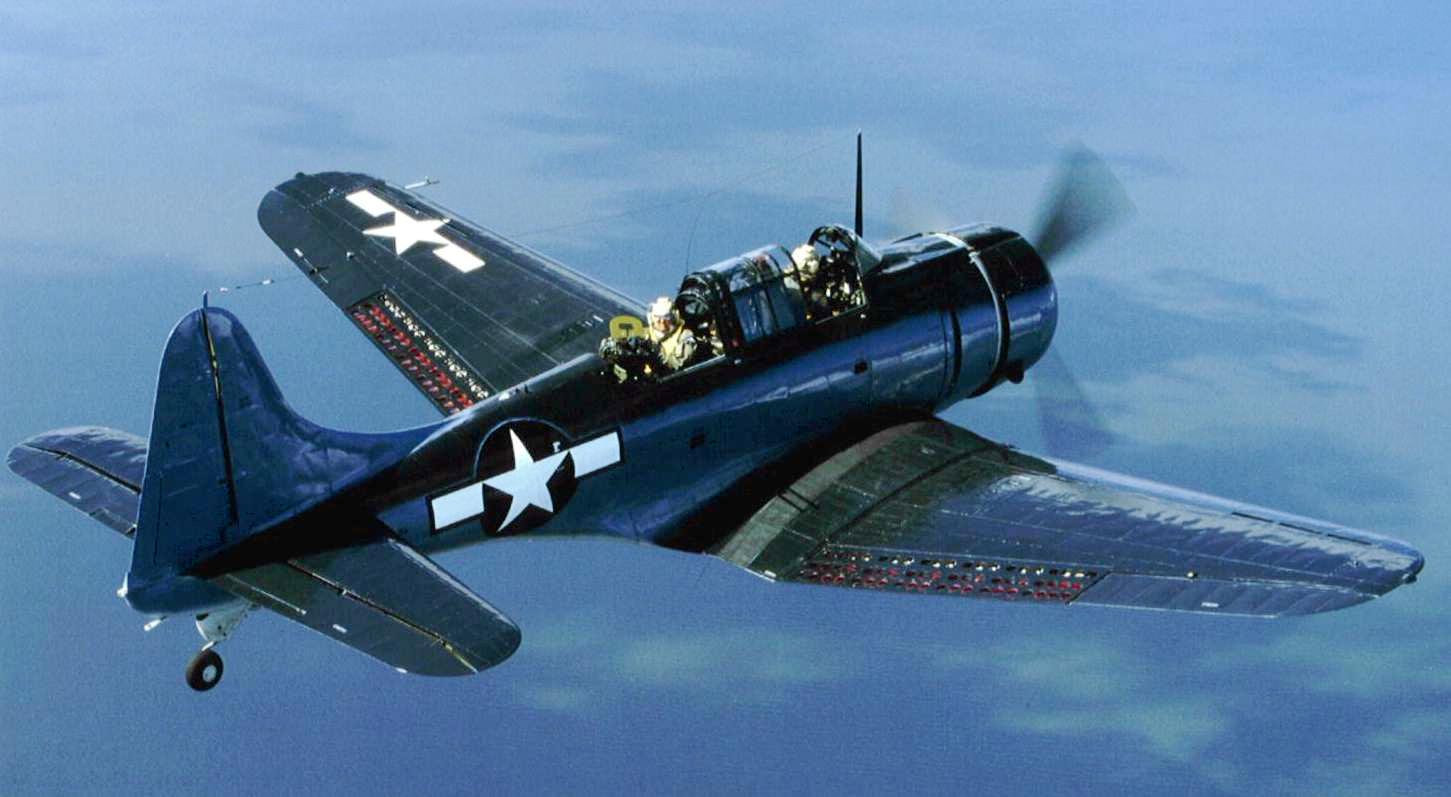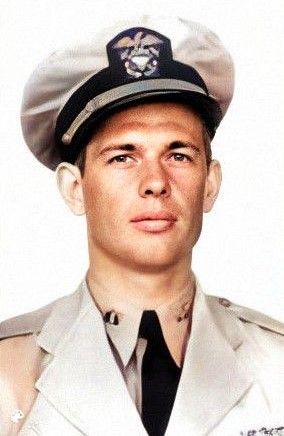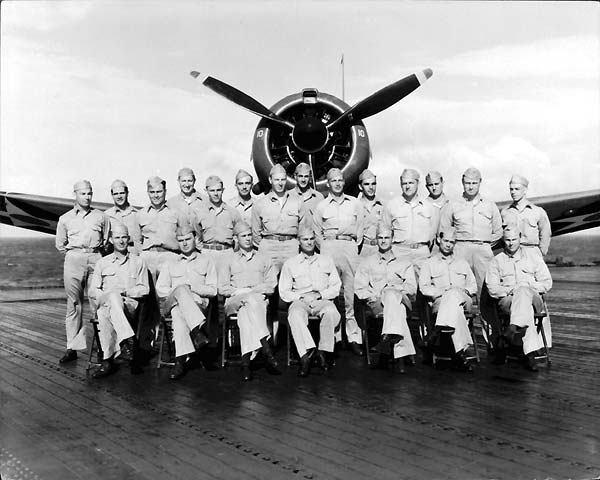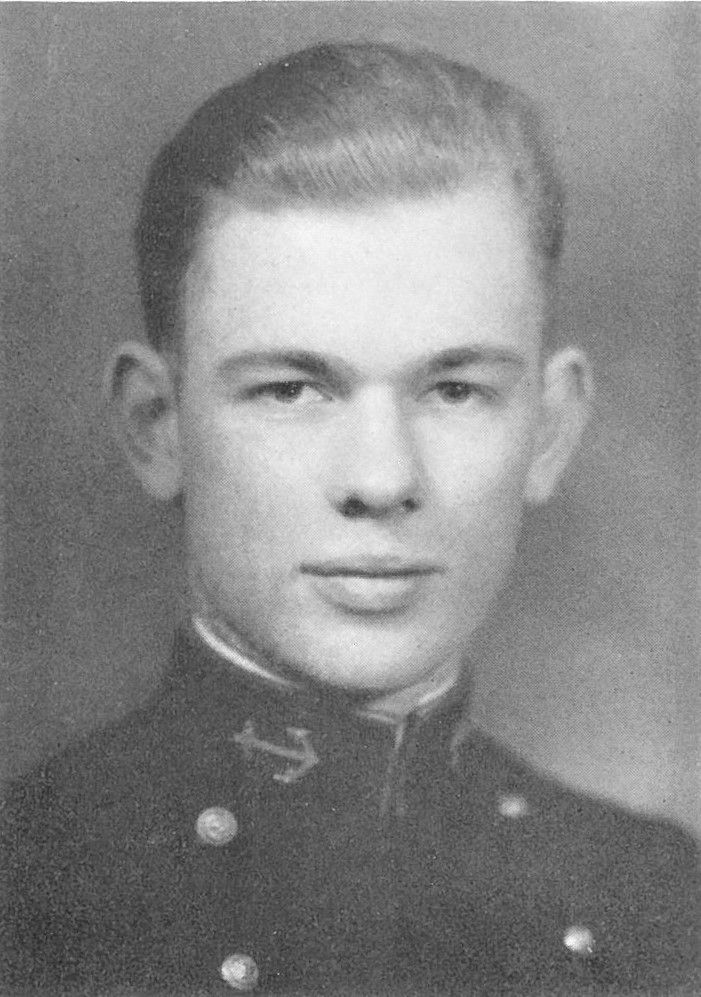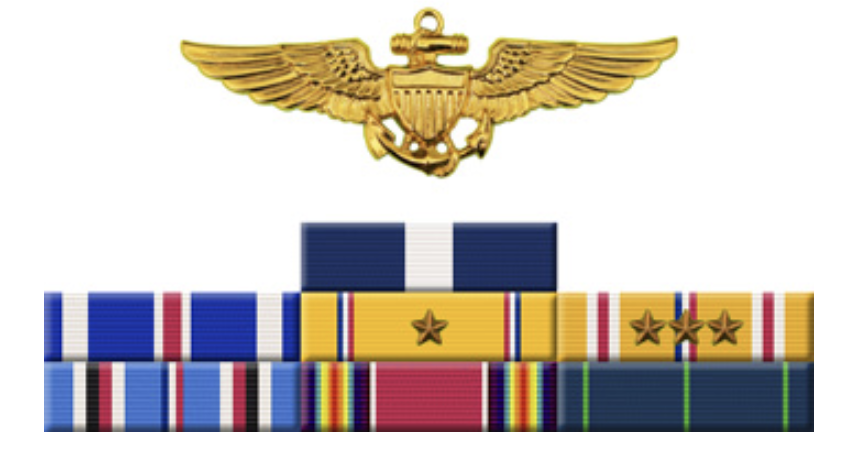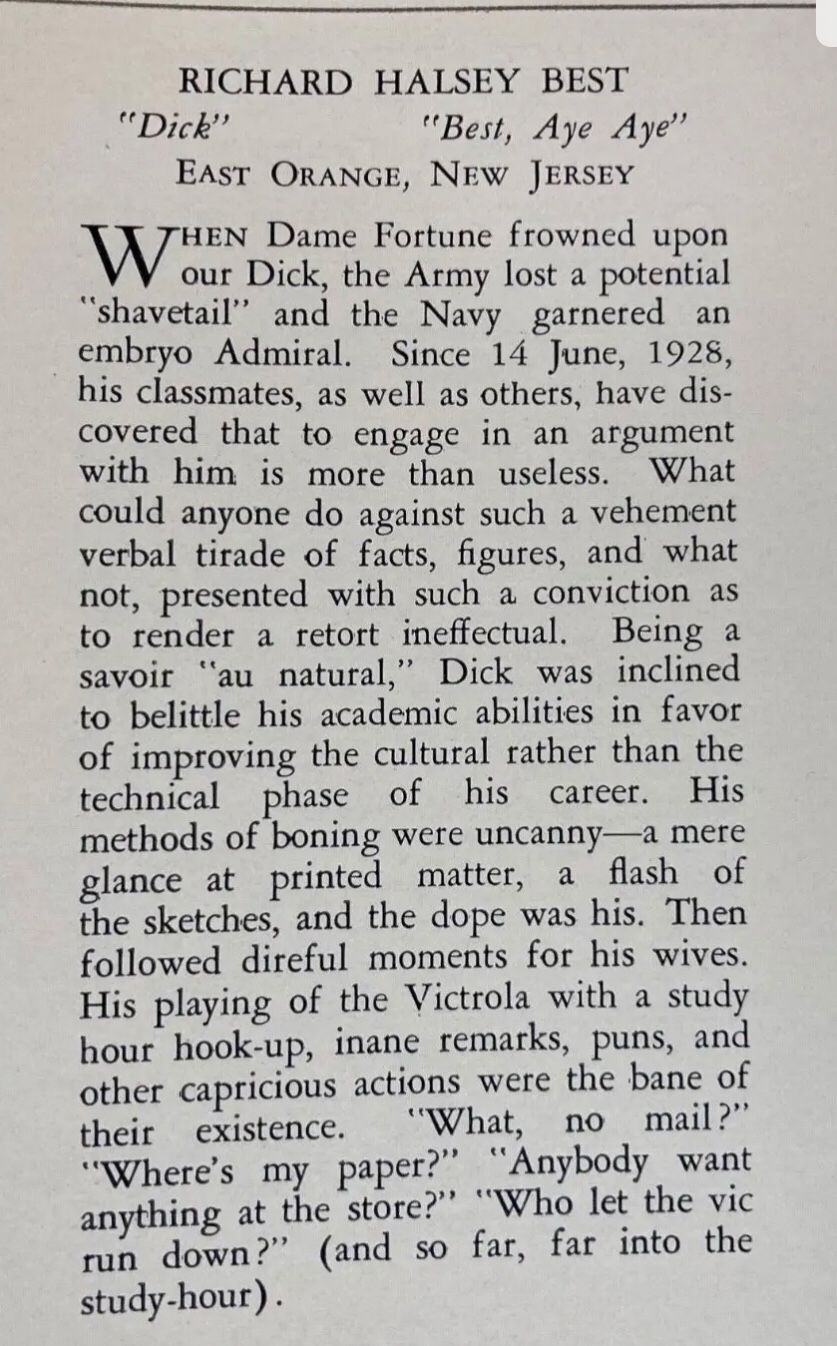BATTLE OF MIDWAY
Flying off the Carrier USS Enterprise and under command of Air Grp Commander LtCmdr Wade McClusky, Lt. Dick Best leading two squadron mates arrived over the enemy fleet. While McClusky led the attack on Carrier KAGA, Best led the attack on Carrier AKAGI. Best dove his Douglas SBD Dauntless Divebomber straight down aiming for the large "meatball" painted on the amidships deck near the A/C elavator. Dicks's bomb hit right where he aimed and it was all over for the AKAGI. This battle for Midway Island was the turning point for War in the PACIFIC! The Jap War Machine never recovered and was on the defensive for remainder of war.
Contributed by LAWRENCE HEIDLEBAUGH (47226871)
----------
Navy Cross Citation
The President of the United States of America takes pleasure in presenting the Navy Cross to Lieutenant Commander Richard Halsey Best (NSN: 0-71601), United States Navy, for extraordinary heroism in operations against the enemy while serving as Pilot of a carrier-based Navy Dive Bomber and Squadron Commander in Bombing Squadron SIX (VB-6), attached to the U.S.S. ENTERPRISE (CV-6), during the "Air Battle of Midway," against enemy Japanese forces on 4 - 6 June 1942.
Defying extreme danger from concentrated anti-aircraft barrage and powerful fighter opposition, Lieutenant Commander Best, with bold determination and courageous zeal, led his squadron in dive-bombing assaults against Japanese naval units.
Flying at a distance from his own forces which rendered return unlikely because of probable fuel exhaustion, he pressed home his attacks with extreme disregard for his own personal safety.
His gallant intrepidity and loyal devotion to duty contributed greatly to the success of our forces and were in keeping with the highest traditions of the United States Naval Service.
Richard Best was born on March 24, 1910, in Bayonne, New Jersey. He entered the U.S. Naval Academy on July 9, 1928, and graduated with a commission as an Ensign on June 2, 1932. His first assignment was aboard the light cruiser USS Richmond (CL-9) from June 1932 to June 1934, followed by flight training at NAS Pensacola, Florida, where he was designated a Naval Aviator in December 1935. LTJG Best next served with VF-2B aboard the aircraft carrier USS Lexington (CV-2) from December 1935 to June 1938, followed by service as a flight instructor at NAS Pensacola from June 1938 to May 1940. His next assignment was with VB-6 aboard the aircraft carrier USS Enterprise (CV-6) from June 1940 to June 1942, during which time he participated in the February 1942 battle off Kwajalein, the attack of Wake Island, the Doolittle Raid, and the Battle of Midway. During the Battle of Midway on June 4, 1942, LT Best sank the Japanese aircraft carrier Akagi, and later aided in sinking the Japanese aircraft carrier Hiryu. He was hospitalized later than month and was medically retired from the Navy in 1944. After his retirement, he worked for Douglas Aircraft Corporation until December 1948, when he went to work for the Rand Corporation, retiring in March 1975. Richard Best died on October 28, 2001, and was buried at Arlington National Cemetery.
----------------------------------------------------------------------
Richard H. Best is a former Navy bomber pilot who personally scored hits on two of the four Japanese aircraft carriers sunk in the critical Battle of Midway during World War II, considered the decisive battle of the war in the Pacific theater. Before the battle, according to experts at the Naval Historical Center in Washington, D.C., the Japanese were on the offensive. The U.S. Pacific Fleet surprised the Japanese forces and sank its four carriers, which had attacked Pearl Harbor only six months earlier. After the victory at Midway, the Allies took the offensive in the Pacific.
For his actions in the battle, Best received the Navy Cross and the Distinguished Flying Cross.
"He exemplified the young Navy pilots who turned the tide of the war," said Jack Green of the Naval Historical Center. "He never bragged about it, but he was obviously very proud of it because he would tell of his experiences to groups such as ours," said Matthew Portz, a retired Navy captain who, along with Mr. Best, belonged to the Order of Daedalians, the national fraternity of military pilots.
Mr. Best was inspired to become a pilot by listening to the exploits of air veterans of World War I. He graduated from the U.S. Naval Academy in 1932, served on the USS Richmond, a light cruiser, and began flight training in 1934. He later taught in instrument flying. In June 1940, he returned to the fleet and requested to be assigned to dive bombers. By mid-1942, he was an experienced combat pilot assigned to the aircraft carrier Enterprise in the Pacific.
While he was flying the first mission during the Battle of Midway, a faulty oxygen canister had created gases that turned to caustic soda. He had breathed in the soda and was told it had activated latent tuberculosis. "I knew my career was dead," Best told Portz. "I never flew again."
After undergoing 32 months of treatment, Mr. Best retired from the Navy in 1944.
BATTLE OF MIDWAY
Flying off the Carrier USS Enterprise and under command of Air Grp Commander LtCmdr Wade McClusky, Lt. Dick Best leading two squadron mates arrived over the enemy fleet. While McClusky led the attack on Carrier KAGA, Best led the attack on Carrier AKAGI. Best dove his Douglas SBD Dauntless Divebomber straight down aiming for the large "meatball" painted on the amidships deck near the A/C elavator. Dicks's bomb hit right where he aimed and it was all over for the AKAGI. This battle for Midway Island was the turning point for War in the PACIFIC! The Jap War Machine never recovered and was on the defensive for remainder of war.
Contributed by LAWRENCE HEIDLEBAUGH (47226871)
----------
Navy Cross Citation
The President of the United States of America takes pleasure in presenting the Navy Cross to Lieutenant Commander Richard Halsey Best (NSN: 0-71601), United States Navy, for extraordinary heroism in operations against the enemy while serving as Pilot of a carrier-based Navy Dive Bomber and Squadron Commander in Bombing Squadron SIX (VB-6), attached to the U.S.S. ENTERPRISE (CV-6), during the "Air Battle of Midway," against enemy Japanese forces on 4 - 6 June 1942.
Defying extreme danger from concentrated anti-aircraft barrage and powerful fighter opposition, Lieutenant Commander Best, with bold determination and courageous zeal, led his squadron in dive-bombing assaults against Japanese naval units.
Flying at a distance from his own forces which rendered return unlikely because of probable fuel exhaustion, he pressed home his attacks with extreme disregard for his own personal safety.
His gallant intrepidity and loyal devotion to duty contributed greatly to the success of our forces and were in keeping with the highest traditions of the United States Naval Service.
Richard Best was born on March 24, 1910, in Bayonne, New Jersey. He entered the U.S. Naval Academy on July 9, 1928, and graduated with a commission as an Ensign on June 2, 1932. His first assignment was aboard the light cruiser USS Richmond (CL-9) from June 1932 to June 1934, followed by flight training at NAS Pensacola, Florida, where he was designated a Naval Aviator in December 1935. LTJG Best next served with VF-2B aboard the aircraft carrier USS Lexington (CV-2) from December 1935 to June 1938, followed by service as a flight instructor at NAS Pensacola from June 1938 to May 1940. His next assignment was with VB-6 aboard the aircraft carrier USS Enterprise (CV-6) from June 1940 to June 1942, during which time he participated in the February 1942 battle off Kwajalein, the attack of Wake Island, the Doolittle Raid, and the Battle of Midway. During the Battle of Midway on June 4, 1942, LT Best sank the Japanese aircraft carrier Akagi, and later aided in sinking the Japanese aircraft carrier Hiryu. He was hospitalized later than month and was medically retired from the Navy in 1944. After his retirement, he worked for Douglas Aircraft Corporation until December 1948, when he went to work for the Rand Corporation, retiring in March 1975. Richard Best died on October 28, 2001, and was buried at Arlington National Cemetery.
----------------------------------------------------------------------
Richard H. Best is a former Navy bomber pilot who personally scored hits on two of the four Japanese aircraft carriers sunk in the critical Battle of Midway during World War II, considered the decisive battle of the war in the Pacific theater. Before the battle, according to experts at the Naval Historical Center in Washington, D.C., the Japanese were on the offensive. The U.S. Pacific Fleet surprised the Japanese forces and sank its four carriers, which had attacked Pearl Harbor only six months earlier. After the victory at Midway, the Allies took the offensive in the Pacific.
For his actions in the battle, Best received the Navy Cross and the Distinguished Flying Cross.
"He exemplified the young Navy pilots who turned the tide of the war," said Jack Green of the Naval Historical Center. "He never bragged about it, but he was obviously very proud of it because he would tell of his experiences to groups such as ours," said Matthew Portz, a retired Navy captain who, along with Mr. Best, belonged to the Order of Daedalians, the national fraternity of military pilots.
Mr. Best was inspired to become a pilot by listening to the exploits of air veterans of World War I. He graduated from the U.S. Naval Academy in 1932, served on the USS Richmond, a light cruiser, and began flight training in 1934. He later taught in instrument flying. In June 1940, he returned to the fleet and requested to be assigned to dive bombers. By mid-1942, he was an experienced combat pilot assigned to the aircraft carrier Enterprise in the Pacific.
While he was flying the first mission during the Battle of Midway, a faulty oxygen canister had created gases that turned to caustic soda. He had breathed in the soda and was told it had activated latent tuberculosis. "I knew my career was dead," Best told Portz. "I never flew again."
After undergoing 32 months of treatment, Mr. Best retired from the Navy in 1944.
Gravesite Details
Interment date 12-6-2001. Lt Commander US Navy. Veteran Service Dates from 06-14-1928 to 03-01-1944. Information extracted from the National Cemetery Administration's National Gravesite Locator. http://www.cem.va.gov/
